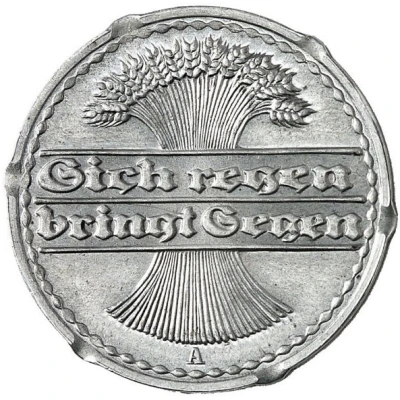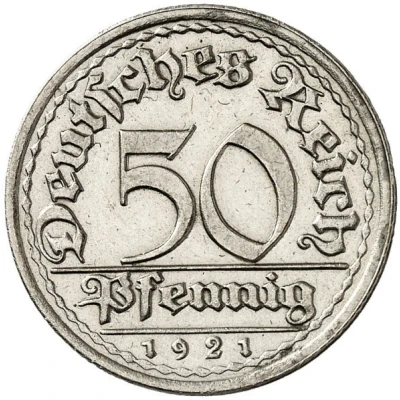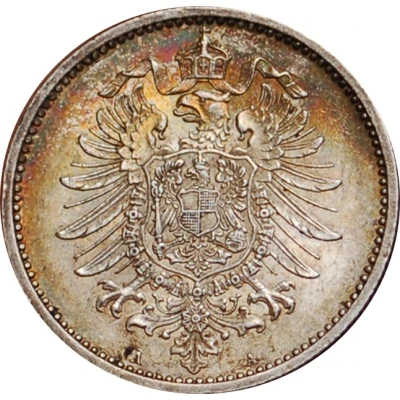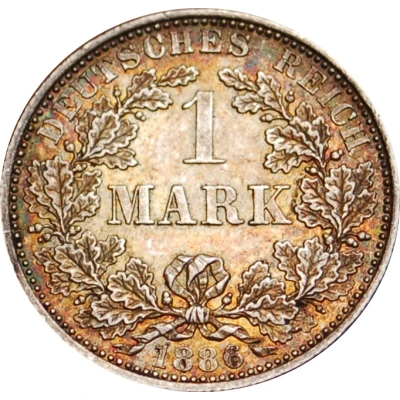


© Fritz Rudolf Künker GmbH & Co. KG, Osnabrück and Lübke & Wiedemann KG, Leonberg
50 Pfennigs Pattern
1922 year| Aluminium plated copper | 3 g | 23.39 mm |
| Issuer | Germany (1871-1948) |
|---|---|
| Period | Weimar Republic (1918-1933) |
| Type | Pattern |
| Year | 1922 |
| Value | 50 Pfennigs (50 Pfennige) (0.50) |
| Currency | Mark (1873-1923) |
| Composition | Aluminium plated copper |
| Weight | 3 g |
| Diameter | 23.39 mm |
| Shape | Round |
| Technique | Milled |
| Orientation | Medal alignment ↑↑ |
| Demonetized | Yes |
| Updated | 2024-10-05 |
| Numista | N#281443 |
|---|---|
| Rarity index | 87% |
Reverse
Value, date in exergue
Script: Latin (Fraktur blackletter)
Lettering:
Deutsches Reich
50
Pfennig
1922
Lettering (regular font):
Deutsches Reich
50
Pfennig
1922
Engravers: Reinhard Kullrich, Louis Oppenheim
Edge
Plain
Interesting fact
One interesting fact about the Pattern 50 Pfennigs (Pattern) 1922 from Germany (1871-1948) made of Aluminium plated copper weighing 3 g is that it was designed by the German artist and engraver, Karl Goetz. Goetz was a prominent figure in the field of numismatics and his designs were known for their intricate details and artistic value. The Pattern 50 Pfennigs coin features an image of a woman representing Germany, surrounded by oak leaves and a shield with the German eagle. This design was meant to symbolize the country's strength and resilience in the aftermath of World War I.



